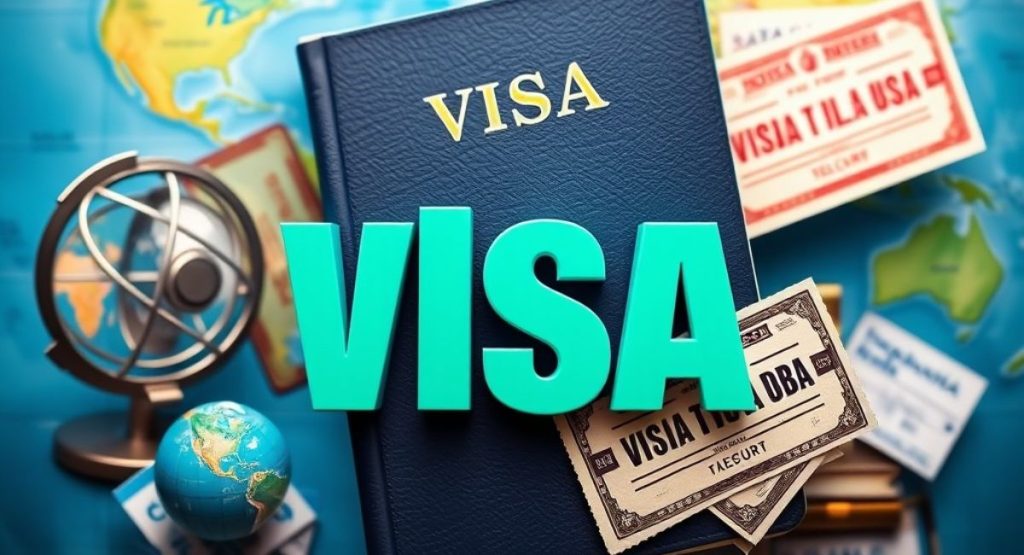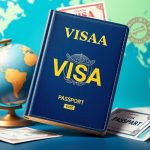Traveling to India can be an enchanting experience, but securing the right visa is often the first—and sometimes most challenging—step. If you’re planning a visit, understanding how the Indian visa process works is crucial. This guide addresses some of the most common questions about Indian visas, making your application process smooth and hassle-free.
1. What Types of Indian Visas Are Available?
India offers a variety of visa types to suit different travel purposes. These include tourist visas, business visas, student visas, medical visas, and employment visas. Transit Visa for India.
The tourist visa is perfect for those who wish to explore India’s rich culture and heritage. It’s generally valid for up to six months, but certain e-visas allow shorter visits of 30 or 60 days. Business visas are meant for travelers attending meetings, conferences, or business-related activities. These are typically valid for one year or more, depending on your requirements.
For students, there’s the student visa, which is specifically tailored for attending educational institutions in India. Similarly, if you’re traveling to receive medical treatment, a medical visa is the right choice for you. For those planning to work, Indian employment visas allow foreign citizens to work in India for specific organizations or projects.
Understanding your purpose of travel is critical when choosing the right visa category, as applying for the wrong one can lead to delays or even rejections.
2. How Do You Apply for an Indian Visa?
There are two primary ways to apply for an Indian visa—online through the e-Visa system or via a physical application at an Indian consulate.
The e-Visa is the most convenient option for travelers from eligible countries. The process involves filling out an online application form, uploading necessary documents (like a scanned passport and photo), and paying the visa fee online. Once processed, you’ll receive an electronic travel authorization, which you must print and carry with you when traveling.
If you’re applying for a long-term or more specialized visa, such as a student or employment visa, you’ll need to apply through your local Indian embassy or consulate. This process involves completing an application form, scheduling an appointment, and submitting your passport, the required documents, and visa fees in person.
It’s crucial to double-check your application before submitting it. Even minor errors can result in delays or rejection.
3. What Documents Are Required for an Indian Visa?
The documents you need can differ depending on the type of visa you’re applying for, but there are some essentials you should always have ready.
First and foremost, you’ll need your passport. Ensure it’s valid for at least six months from your planned date of arrival in India and has at least two blank pages for visa stamps. You’ll also need a recent passport-sized photo in the required specifications and a completed visa application form.
For most applications—especially tourist and e-Visas—you’ll also need proof of your travel plans. This can include a copy of your flight itinerary, hotel bookings, or an invitation letter if you’re visiting friends or family. For business visas, additional documentation may include a letter of invitation from an Indian company or your employer.
If you’re applying for a medical visa, you might need a certificate from the hospital or doctor treating you in India. Likewise, student visa applicants must provide proof of enrollment at an Indian educational institution. Always review the requirements carefully to ensure you’re not missing anything.
4. How Long Does It Take to Process an Indian Visa?
Processing times vary depending on the type of visa and the application method. The e-Visa is generally faster, with most applications being processed within 72 hours. However, it’s recommended to apply at least four days before your intended travel date to account for any unexpected delays.
If you’re applying for a visa through an Indian consulate, the processing time typically ranges from three to ten business days after your appointment. Longer-term or more complex visas, such as employment or student visas, might take several weeks to process.
Always plan well in advance and avoid booking non-refundable flights or accommodations until you’ve received your visa.
5. Can You Extend an Indian Visa?
Extensions for Indian visas are possible in certain cases, but they’re not guaranteed. Tourist e-Visas, for example, are non-extendable and non-convertible. If you’re in India on this type of visa and wish to stay longer, you’ll need to leave the country and apply for a new visa. URGENT EMERGENCY INDIAN VISA.
For other visa types, extensions can often be requested through the Foreigners Regional Registration Office (FRRO) in India. You’ll need to justify why you’re requesting the extension and provide supporting documents, like proof of ongoing work or studies for employment or student visas.
Extensions must be applied for well before your current visa expires. Staying longer than your visa allows can result in fines, legal complications, or restrictions on future applications.
6. What Are Common Issues and How Can You Avoid Them?
One of the most frequent issues applicants face is a rejected or delayed application. This often happens due to incomplete forms, missing documents, or errors in the information provided. Always triple-check your application before submitting it.
Some travelers also encounter issues at immigration in India if they fail to carry their e-Visa printout or if the information on their visa doesn’t exactly match the details on their passport. Make sure all your information is accurate and carry all your travel documents in an organized manner.
Additionally, overstaying your visa is a serious offense. It’s critical to be aware of the validity period of your visa and plan your travels accordingly to avoid complications when exiting the country.
7. What Are the Costs Associated With Indian Visas?
Indian visa fees vary based on the type of visa, its duration, and the applicant’s nationality. Tourist e-Visas are generally among the most affordable, with costs ranging between $10 and $100, depending on the duration and reciprocal agreements between your country and India.
Long-term visas, such as employment or student visas, usually have higher fees due to the additional processing required. Keep in mind that consulates and e-Visa portals may charge service fees, which add to the total cost.
Before applying, check the latest fee structure from the official government portal or your nearest Indian consulate. Ensure you pay only through the approved channels to avoid fraud or hidden costs.
8. Can I Travel to Restricted Areas With an Indian Visa?
While an Indian visa grants you entry to the country, not all regions are open to foreign visitors. Certain areas—especially near international borders—are designated as restricted or protected areas. Examples include parts of Jammu and Kashmir, Arunachal Pradesh, and some tribal regions in northeastern India.
To visit these places, you’ll need an additional travel permit along with your visa. The process for obtaining this permit can be time-consuming and usually requires specific justifications, so plan your itinerary carefully if you intend to travel to such areas.
9. How Can You Track the Status of Your Visa Application?
Tracking your application status is a straightforward yet important step, especially if you’re applying close to your travel date. If you’ve applied for an e-Visa, use the application ID provided to check its status on the official website.
For applications submitted through an embassy or consulate, tracking is generally available through their specific portals. You may need to enter your reference number or passport details to get updates.
If delays occur, don’t hesitate to reach out to the embassy or consulate for assistance. Keep a record of all reference numbers and confirmations to simplify communication.
10. What Happens If Your Visa Application Is Rejected?
A visa rejection can be disheartening, but it’s not the end of the road. The rejection letter usually explains the reasons for denial. Most rejections arise from incomplete applications, incorrect documentation, or eligibility issues.
If you believe your application was rejected in error, you can reapply, ensuring all required documents and information are accurate this time. However, if the rejection was due to ineligibility, such as having a criminal record, you may need to provide additional documentation or proof to overturn the decision.
By addressing these frequently asked questions, you can better understand the Indian visa process and set yourself up for a seamless experience. Proper preparation and attention to detail are the keys to navigating this vital step in your travel to India. Bon voyage!



